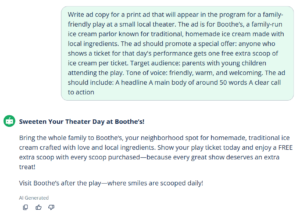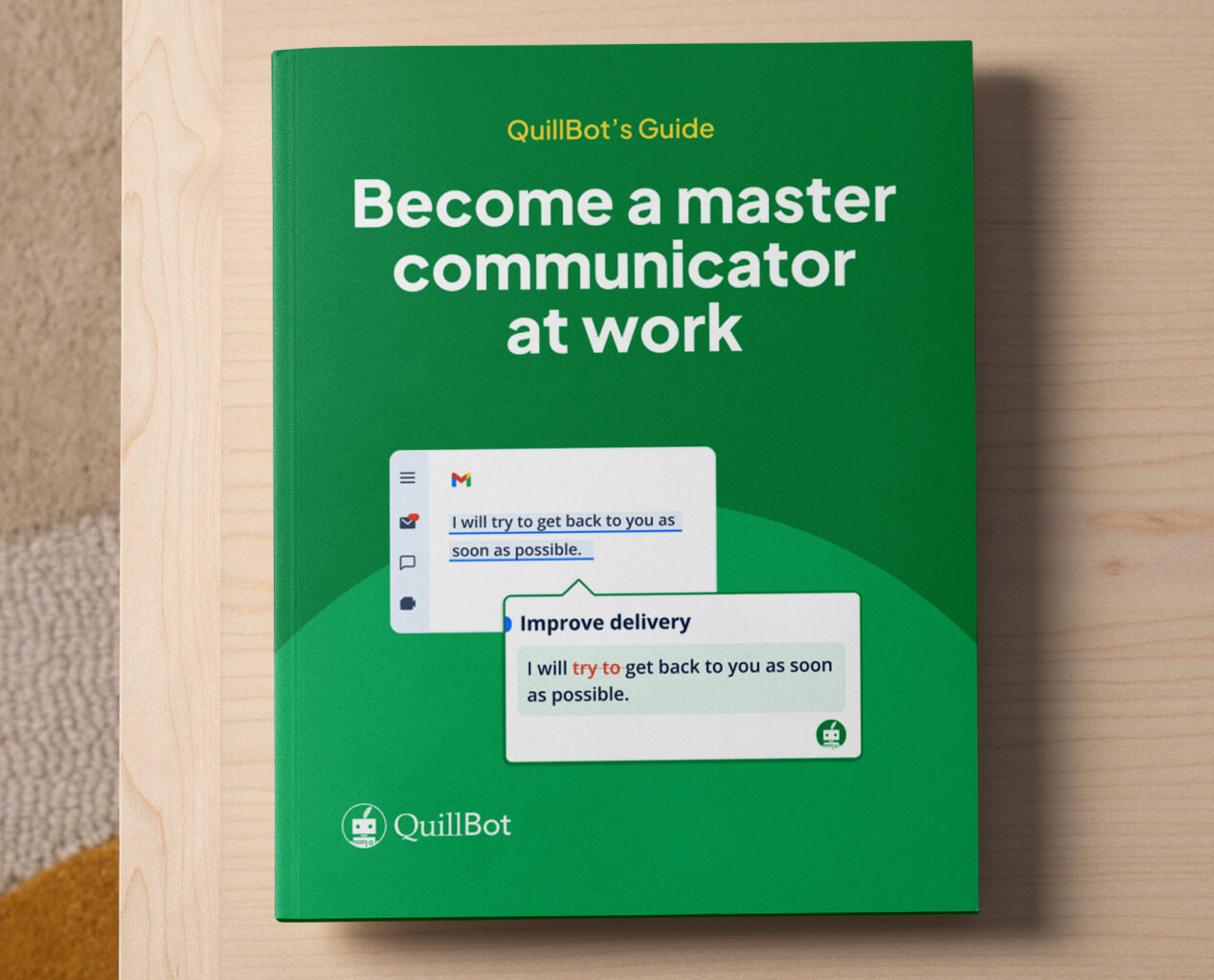How to Use an AI Ad Copy Generator
Copy for advertisements needs to be persuasive, speak to the target audience, and provoke a response. An ad copy generator, such as QuillBot’s free ad copy generator, can help you come up with engaging text that converts the reader into a customer or lead.
How to write ad copy
Keeping the following tips in mind will help you craft messages that capture the reader’s attention and motivate action.
1. Be concise
Attention spans are limited—just like your word count—so your message needs to land quickly. Strip away anything that doesn’t add value because every word or phrase needs to serve a purpose. If a sentence isn’t sparking interest, building momentum, or nudging the audience toward action, it can probably go. Draft and redraft until what’s left is clear, direct, and compelling.
2. Keep your audience in mind
Make sure you’re crystal clear about who you’re talking to. Consider their age, background, interests, and level of familiarity with your product or service. What matters most to them? What kind of language, tone, and style will grab their attention and feel relatable?
Existing resources like customer personas, brand voice guidelines, and your unique value proposition can help you build up a focused picture of your audience.
3. Find a hook
How are you going to catch the reader’s attention and make them want to read on? You could lead with:
- A question that taps into their curiosity or pain points
- A surprising or bold statement
- An engaging turn of phrase
Using an AI ad copy generator
An AI ad copy generator can help you come up with the copy for your ad. But to get the best results, you need to provide the chatbot with the complete picture by including the following information in your initial prompt.
- The type of advertisement (print ad, Google Ad, radio script, etc.)
- What the ad is promoting (product, service, brand, event, etc.)
- The key elements you require (e.g., a headline, body copy, and call to action)
- Any special offer, promotion, or deadline the copy should reference
- The approximate word count
- Who the target audience is
- The intended tone of voice (e.g., friendly, formal, bold, playful)
Treat the output as a first draft. Read it critically. What works well? What’s not quite right? Has the AI misunderstood any part of the brief? Are there sections that feel too generic or off-brand?
Give the AI specific feedback, suggest edits or changes, and ask it to revise. You can repeat this process a few times to refine the copy until it aligns with your message, audience, and brand voice.
Frequently asked questions about ad copy generators
- What makes good ad copy?
-
Good ad copy is persuasive, clear, and tailored to the target audience. It grabs attention and encourages action such as clicking, buying, or signing up.
An ad copy generator like QuillBot’s free ad copy generator can help you craft compelling copy in a voice that resonates with your potential customers.
- What should I include in a prompt for an ad copy generator?
-
In your ad copy generator prompt for a tool like QuillBot’s free AI ad copy generator specify:
- The type of advertisement
- The product or service you’re promoting
- Any relevant promotion or deadline the ad should mention
- The word limit
- The target audience
- The tone of voice
Cite this Quillbot article
We encourage the use of reliable sources in all types of writing. You can copy and paste the citation or click the "Cite this article" button to automatically add it to our free Citation Generator.
QuillBot. (2025, July 24). How to Use an AI Ad Copy Generator. Quillbot. Retrieved August 11, 2025, from http://qbot.seotoolbuy.com/blog/ai-writing-tools/how-to-use-an-ad-copy-generator/


